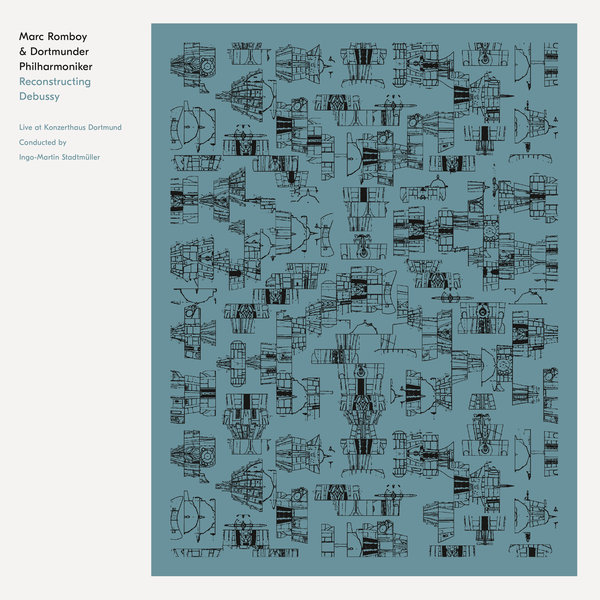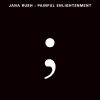Review by Shannon Lawlor
Claude Debussy – arguably one of the most influential impressionist composers of the late 19th century. Best known for his extensive use of experimentation, non-traditional scales and chromaticism, Debussy has undoubtedly influenced many composers in the past and present, including Maurice Ravel, Igor Stravinsky, George Gershwin as well as the contemporary minimalist works of Philip Glass or Steve Reich. Classical music can clearly affect the mind in inconceivable manners, it has every intention of evoking absolute emotion and tugging on each heartstring like melancholic piano wire. Which can only lead one to assume that classical music and song structure are by far the most prominent keys to understanding true, raw emotion, even by today’s ever-changing standards. There is an obvious reason we explore this sentiment and project it onto modern media such as film, television or anything in which we can adhere sound to.
For centuries classical music has remained a prestigious component in expressing pure emotion, and will surely live on for centuries to come. Artists and musicians from all walks of life have used this notion in contrast with their personal influences and created their own separate entities, or formulas within these regions.
Marc Romboy is one artist who has taken this formula a step further to produce something quite extraordinary. Romboy has been an important presence in the electronic scene since the early 1990’s, and has been pushing the boundaries of conventional songwriting for decades now. Having released multiple extended plays, remixes and collaborations with like-minded artists such as Blake Baxter, Matthias Tanzmann and Tommie Sunshine, to name a few, Romboy still continues to inescapably perplex his audience and solidify the gap between traditional and experimental composition. More recently, along with Dortmund Philharmoniker, Romboy set out to reconstruct, or rather, enhance a selection of compositions originally conceived by Claude Debussy himself. With a complete live orchestra, sound programmer (Ali Khalaj) and renowned conductor (Ingo-Martin Stadtmüller) behind him, a live album titled Reconstructing Debussy was born. Recorded live at Konzerthaus, Dortmund, Germany at the end of 2016, the album was released via Romboy’s own label Hyperharmonic on July 7th 2017.
The concert begins with ‘Prélude à L’après-midi D’un Faune’, the audience’s applause slowly flutters in and out, expressing sheer appreciation and anticipation for what’s to come. A mysterious flute slowly creeps in, building layers upon layers which paint a fantastical portrait of dreamlike whimsy. Accompanied by illusionary stringed sequences and harp sounds, the whimsy starts to fade, but pizzicato and legato violins start to emerge giving birth to a trip-hop-esque beat before erupting into a full blown wall-of-sound, including pulsing basslines and lush string work. A synth-fueled melody then plays out and reminds the listener that this is no soundtrack to a film, but probably should be.
‘La Mer I De L’aube A Midi Sur La Mer-Tres Lent’ is the second movement, vibrating synthesizer swells lure in clicked and popped percussion under a dark sun of suspense, but during the mid-string section we’re left to soak up the last of the twilight as it slowly crumbles in on itself. Night is upon us now, it’s evident by the way chimed melodies twinkle like distant stars, the moonlight reaches for the ocean in a cascading crash of symphonic waves as we ascend for the heavens.
Now surrounded by clouds, ‘La Mer II Jeux De Vague-Allegro’ sweeps in like a tranquil breeze, but we soon realise that the ground is much too far away. Trying to remain calm, balance is found between disconcerting violins and plucked instruments, the two meld together forming a solid bond as rhythmic kick drums leads us to shore. Driving basslines and percussive hi-hats now tie into the mix, as the last half of this piece sculpts the scenery with a dazzling string section led by Dortmunder Philharmoniker.
The fourth and final movement, titled ‘La Mer III Dialogue Du Vent Et De La Mer-Anime Et Tumultueux’ may just be the perfect homage to the ocean, as La Mer’s direct translation intends it to be. Upon crystal white beaches and glistening seas; a deep, resonant bass serves as the wind while various strings act as waves brushing against the rocks. A compact pattern unwinds, bringing in a low-pitched bass and a steady beat to consolidate composure. As the final movement comes to a close, the air is once again filled with a torrent of applause and what I can only assume to be a more than deserving standing ovation.
The wonderfully inventive pairing of Marc Romboy and Dortmund Philharmoniker was an incredibly sensible commitment, and understandably so. Never before has electronica merged with classical arrangements in such a highly sophisticated manner, whilst retaining a compulsive urge to set sail for the dance floor. Although moments can appear dark, it’s a vast spectrum of brilliant colour that never seems to shed it’s skin of mystery or delight.




